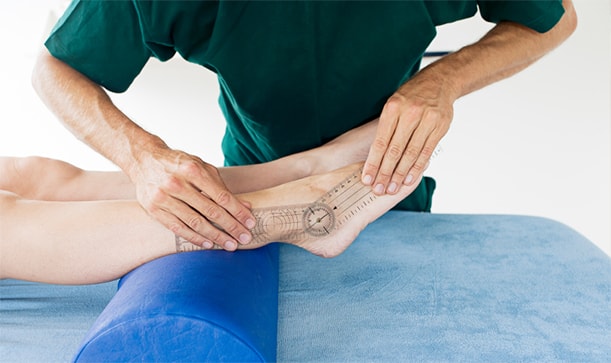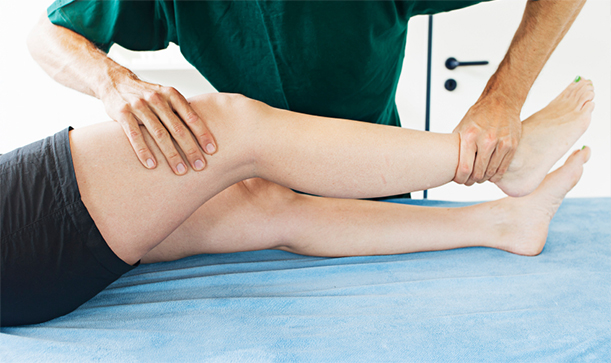CK Physiotherapy
AREAS COVERED
W7, W5, W13, Ealing, West London
57 Elthorne Avenue
Hanwell, W7 2JY
T: 020 8566 4113
M: 079 572 46185
E: info@ckphysio.co.uk
Location / Parking
We are situated in Hanwell, between Boston Manor Road and Northfields Avenue, south of the Uxbridge Road.57 Elthorne Avenue
Hanwell, W7 2JY
There are parking restrictions Mon - Fri 9-10am and 2-3pm. If you need a permit during this time please inform your therapist when you arrive. There are no parking restrictions at other times.
Opening Times
Please phone the number above during working hours to make an appointment. Our reception service will be happy to book your session.
London Underground / Bus Services
London Underground
10 min. walk from Boston Manor Tube Station.
15 min. walk from Northfields Tube Station.
Bus Service
E8, E3, E2, 207, 607, 83
Request Call Back
Our Blog
Today's Generation: What is ‘Text Neck’?
By: admin Date: Feb 14th, 2023If you’ve ever struggled with neck pain, you’ll know how frustrating and uncomfortable it can be.
It can make even the simplest daily activities a challenge and prevent you from participating in your favourite sports and physical activities. And let's not get started on the pain that can come when you’re trying to get to sleep.
The increased use of smartphones is having a negative impact on the neck health of people all across the UK.
The constant downward gaze we have while using our phones places extra stress on our neck and upper back muscles.
This can lead to a number of different symptoms but often begins with a feeling of tension and dull pain around your neck, shoulders and back.
This condition is often referred to as ‘text neck’.
With average adults in the UK spendingmore than 4 hours per day using their mobile devices, it’s easy to understand why text neck is becoming more of a common issue.
What are the symptoms of text neck?
Although text neck isn’t an officially recognised condition, it’s a term that is increasingly being used by physiotherapists to describe the symptoms caused by the prolonged use of smartphones.
Common symptoms for patients suffering from text neck include:
- Headaches
- Reduced mobility of the neck
- Increased curvature of the spine
- Pain and discomfort in the neck and shoulders
- Poor posture, hunched forward with rounded shoulders
To give a bit more context about why these text neck aches and pains occur, it’s worth looking at what happens to our bodies when we’re looking at our smartphones.
When we look down at our devices, we shift the position of our heads from a healthy, upright position to a forward and downward angle.
This increases the tension on your spine, your neck muscles, and your back muscles.
If you use your phone with your head down at a 60 degree angle, it’s estimated that it adds an extra27kg of pressure to your neck compared to an upright position. That’s a lot!
Over a prolonged period, this increased pressure can quickly lead to muscle strain, with patients suffering from pain and discomfort in their necks.
This can quickly evolve into issues with mobility of the neck, headaches and blurred vision.
And if left untreated, text neck can lead to more serious problems such as herniated disks, curvature of the spine and issues with your nerves.
That’s why it’s important to get physiotherapy prevention or intervention early.
What are some good exercises to prevent or alleviate text neck aches and pains?
To prevent text neck, it's important to be mindful of your posture while using electronic devices and to take regular breaks to stretch and move your neck and shoulders.
If you’re at home, it can also be a good idea to use a stand or holder to prop up your device at eye level, to reduce the need to tilt your head down.
If you do begin to suffer from text neck symptoms, the following tips might be helpful.
But before you get started, it’s important to consult with a health professional to make sure that any exercises are suitable for your condition.
Exaggerated nod
This is a great exercise if you’re suffering from text neck. It helps improve the mobility of your neck by reversing the forward and downward angles we typically use when looking at our phones.
To get started, sit, or stand comfortably and try to relax your shoulders and your jaw.
Tilt your head backwards until you’re looking up at the ceiling, and you start to feel a slight stretch in your neck.
Hold this position for a few seconds before returning your head to an upright position. Repeat 5 times.
Reverse Shoulder Stretch
This exercise is helpful for working the muscles in your shoulders and chest, which can help with your overall posture and alleviate text neck aches and pains.
To get started, stand up straight and relax your body.
Place your arms behind your back and interlock your fingers.
Keeping your back straight, raise up your arms until you start to feel a slight stretch in your chest muscles. Hold this position for 20-30 seconds.
Chin tuck
This simple exercise helps to strengthen your neck muscles and can be practiced anywhere.
Start by sitting up straight in a chair, and keep your chin level with the floor.
Slowly bring your head and chin backwards. If you’re doing the exercise correctly you should feel a little stretch at the back of your neck. Hold this for a few seconds, and then release.
Repeat 5 times.
Wall Slides
This exercise can help to strengthen the muscles in your upper back.
Get in position by standing with your feet around 20cm away from the wall, with your head and back pressed tightly against it.
With your palms facing outwards, bring your arms up to your sides so that your elbows run parallel with the floor.
Tighten your stomach muscles as you move your arms upwards as far as they can comfortably go, before returning to your starting position. Repeat this 10-15 times.
Lateral Neck Stretch
Another simple exercise for loosening your neck muscles that you can practice almost anywhere. It’s great for shifting those text neck aches and pains.
Start by sitting up straight in your chair, with your shoulders back and your head straight.
Slowly move your right ear down as you can towards your right shoulder. Hold the position for around 20-30 seconds. Repeat 3 times before switching to your left shoulder.
How can a physiotherapist help with text neck symptoms?
At CK Physiotherapy, we’ve seen an increasing number of patients get in touch with symptoms of text neck in recent years.
It’s becoming quite a common complaint that often requires physiotherapy prevention or intervention.
If you visit a physiotherapist with text neck aches and pains, the first step they are likely to take is to assess your condition. They’ll look at your posture, range of motion and muscle strength.
Following this initial assessment, the physiotherapist will develop a personalised treatment plan to alleviate pain and improve your symptoms.
This is likely to include stretching and strengthening exercises for the muscles in your neck, shoulders and back.
Your physiotherapist might also recommend manual therapy techniques such as massage, mobilisation, and manipulation to help reduce pain and help to improve your range of motion.
Another benefit of getting physiotherapy prevention or intervention is that your therapist will be able to provide you with tips and guidance for maintaining a good posture while you use electronic devices to reduce the risk of text neck in the future.
It’s also common for a good physiotherapist to schedule a follow-up appointment to monitor your progress, adjust the treatment plan as needed, and provide ongoing support.
Suffering from symptoms of text neck? Speak to CK Physiotherapy
At CK Physiotherapy, we have a team of licenced, chartered physiotherapists operating in the Ealing area.
We’ve seen an increase in the number of patients suffering from text neck aches and pains in recent years, and treatment of the condition is something that our team specialises in.
If you’re suffering from any kind of pain and discomfort in your neck and shoulders, reduced mobility in your neck, or notice that your posture is changing, reach out to our friendly team for an online consultation.
One of our therapists will connect with you to talk about your text neck aches and pains, arrange an initial assessment, and work with you to create an individualised treatment plan.
If left undiagnosed and untreated, text neck can lead to more serious symptoms – so it’s worth getting your condition assessed by a professional as early as you can.
Our team are waiting to help. Just give us a call on 020 8566 4113.
Further reading
https://www.guygolds.com/post/how-to-treat-and-prevent-text-neck-advice-from-a-physio
https://www.healthline.com/health/fitness-exercise/text-neck-treatment#exercises
https://www.spine-health.com/conditions/neck-pain/text-neck-symptoms-and-diagnosis
https://claritypt.com/blog/text-neck-signs-symptoms-and-what-you-can-do/
https://www.vivehealth.com/blogs/resources/text-neck-exercises
https://www.statista.com/statistics/1285042/uk-daily-time-spent-mobile-usage/
https://www.technogym.com/us/wellness/the-neck-the-power-behind-the-head/
https://multimedia.scmp.com/lifestyle/article/2183329/text-neck/





